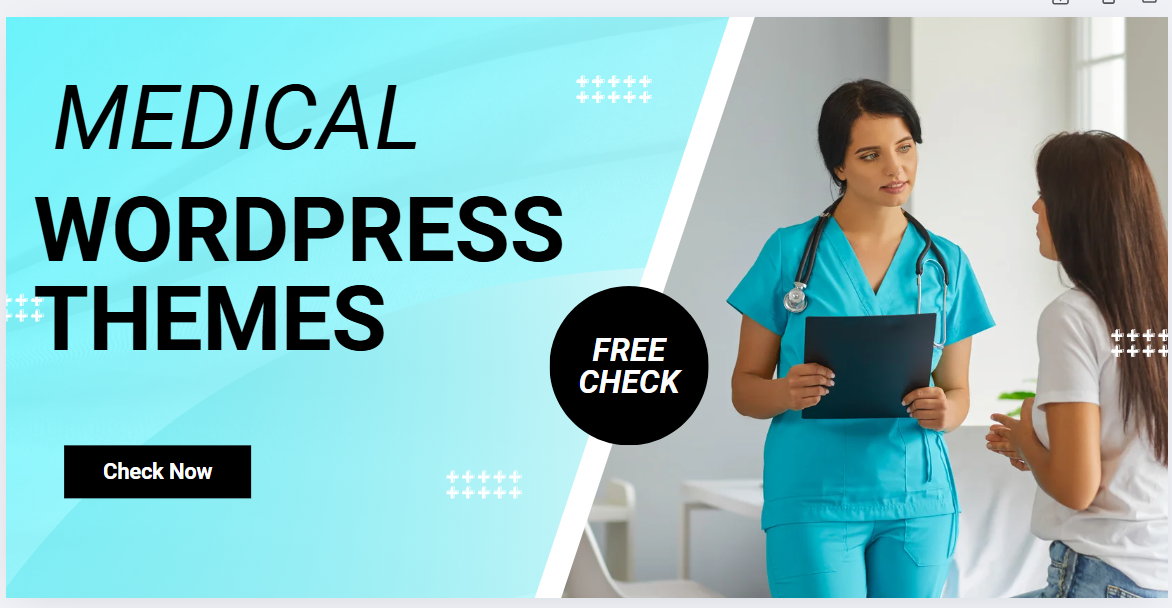A redesigned healthcare website represents a significant investment in your medical practice’s digital presence. However, creating a beautiful, functional website is only half the battle. The real challenge lies in effectively promoting your new platform to ensure it reaches your target audience and drives meaningful engagement. This complete guide will walk you through proven strategies to maximize the impact of your healthcare website redesign.
Understanding Your Audience Before Promotion
Before launching any promotional campaign, you must clearly understand who you’re trying to reach. Healthcare websites serve diverse audiences, including current patients, potential patients, referring physicians, and healthcare professionals. Each group has different needs, concerns, and preferred communication channels.
Current patients typically seek easy access to appointment scheduling, test results, and general health information. WordPress themes for corporate business and multipurpose agency They value convenience and familiarity with your business operations. Potential patients, on the other hand, are often researching symptoms, treatment options, or comparing healthcare providers. They need reassurance about your expertise and the quality of care you provide.
Referring physicians look for professional credentials, specialization details, and streamlined referral processes. Understanding these distinct needs helps you tailor your promotional messages and choose the most effective channels for reaching each audience segment.
Creating a Pre-Launch Strategy
A successful website promotion begins before the official launch. Start building anticipation among your existing patient base by announcing the upcoming redesign through multiple touchpoints. Send personalized emails to current patients, explaining the improvements they can expect and highlighting new features that will benefit them directly.
Social media platforms provide excellent opportunities for teasing your new website design. Share behind-the-scenes glimpses of the development process, preview screenshots of key pages, and explain the reasoning behind design decisions. This approach creates curiosity and demonstrates your commitment to improving patient experience.
Consider creating a countdown campaign across all your communication channels. This builds excitement and ensures your audience knows exactly when to expect the new website. Remember to train your staff about the new features so they can confidently answer questions and guide patients through the transition.
Leveraging Email Marketing Effectively
Email marketing remains one of the most powerful tools for promoting your redesigned healthcare website. Develop a multi-part email series that introduces different aspects of your new platform over several weeks. Start with a welcome email announcing the launch, followed by feature-focused messages that dive deep into specific improvements.
Segment your email list based on patient types, medical conditions, or engagement levels. This allows you to send targeted messages that resonate with specific groups. For example, elderly patients might appreciate information about larger fonts and simplified navigation, while younger patients might be more interested in mobile app integration or online payment options.
Include clear calls-to-action in every email, directing recipients to explore specific sections of your website. Track click-through rates and engagement metrics to understand which features generate the most interest. This data helps you refine your promotional approach and identify areas that might need additional explanation or marketing support.
Social Media Promotion Strategies
Social media platforms offer unique opportunities to showcase your redesigned healthcare website in visually appealing ways. Create short video tours highlighting key features, before-and-after comparisons, and patient testimonials about the improved user experience.
Different platforms serve different purposes in your promotional strategy. Facebook works well for detailed posts and community engagement, while Instagram focuses on visual content and behind-the-scenes glimpses. LinkedIn targets healthcare professionals and referral sources, making it ideal for promoting professional features and capabilities.
Encourage your staff to share content about the website redesign on their personal social media accounts. This amplifies your reach and adds authenticity to your promotional efforts. Provide them with pre-written posts and approved images to maintain consistency while making sharing easy for busy healthcare professionals.
Optimizing for Search Engines Naturally
While avoiding keyword stuffing, your redesigned website should naturally incorporate relevant terms that patients use when searching for healthcare services. Focus on creating valuable content that addresses common patient questions and concerns. This approach naturally improves search engine visibility while providing genuine value to your audience.
The foundation of your online presence often starts with selecting the right platform. Medical WordPress Themes provide an excellent starting point for healthcare websites, offering specialized features like appointment booking, patient portals, and HIPAA-compliant contact forms. These themes are specifically designed for medical practices and include built-in functionality that general website templates lack.
Consider creating a blog section on your redesigned website where you can share health tips, explain common procedures, and discuss new treatments or technologies. This content strategy helps establish your expertise while providing fresh material for search engines to index. Regular blog updates also give you reasons to reach out to your audience through email and social media.
Building Strategic Partnerships
Partnering with other healthcare providers, local businesses, and community organizations can significantly expand your website’s reach. Reach out to complementary medical practices that don’t compete directly with your services. For example, a dermatology practice might partner with a plastic surgery clinic, or a family medicine practice might collaborate with specialists they frequently refer to.
Consider offering to write guest blog posts for partner websites, discussing topics that showcase your expertise while naturally mentioning your new website features. This approach builds backlinks to your site while establishing you as a thought leader in your field.
Local business partnerships can also be valuable. Pharmacies, fitness centers, wellness spas, and health food stores often serve similar customer bases. Explore opportunities for cross-promotion that benefit both businesses while introducing your redesigned website to new audiences.
Measuring Success and Adjusting Strategies
Implementing comprehensive tracking systems helps you understand which promotional strategies deliver the best results for your business. Set up analytics tools to monitor website traffic, user behavior, conversion rates, and goal completions. Pay special attention to metrics like appointment bookings, contact form submissions, and time spent on key pages.
Create monthly reports that track progress against your initial goals. Look for patterns in user behavior that might indicate areas for improvement or additional promotional opportunities. For example, if you notice high traffic to your services page but low conversion rates, you might need to adjust your call-to-action buttons or simplify the appointment booking process.
Don’t be afraid to adjust your promotional strategies based on the data you collect. What works for one healthcare practice might not work for another, depending on factors like location, specialization, and target demographics. Regular analysis and adjustment ensure your promotional efforts remain effective over time.
Patient Education and Engagement
Your redesigned website templates should serve as an educational resource that builds trust and demonstrates your commitment to patient care. Create detailed pages explaining common procedures, treatment options, and preventive care measures. This content not only helps patients make informed decisions but also positions your practice as a reliable source of medical information.
Consider developing interactive tools like symptom checkers, health risk assessments, or treatment decision aids. These features encourage users to spend more time on your website while providing valuable insights into their healthcare needs. The data collected from these tools can also help you understand your patient population better and tailor your services accordingly.
Promote these educational resources through all your marketing channels. Highlight them in email newsletters, share them on social media, and mention them during patient visits. This multi-channel approach ensures maximum visibility for your valuable content.
Conclusion
Promoting a redesigned healthcare website requires a comprehensive, multi-faceted approach that considers the unique needs of medical practices and their patients. Success depends on understanding your audience, creating compelling content, leveraging multiple promotional channels, and continuously monitoring performance to refine your strategies.
The investment in Medical WordPress Themes and professional website redesign only pays off when paired with effective promotion. By implementing the strategies outlined in this guide, healthcare practices can ensure their new digital presence reaches the right audience and delivers measurable results for their business.
Remember that website promotion is an ongoing process, not a one-time event. Consistent effort, regular content updates, and responsive adjustments to your promotional strategies will help your redesigned healthcare website continue attracting and serving patients effectively for years to come.







0 Comments